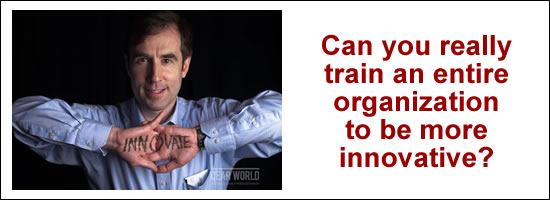 As a provider of innovation coaching services along with training and innovation speaking, I try to talk to as many other fellow practitioners as my schedule allows to keep abreast of what others are experiencing and doing. What I have found in the area of billing clients is that there are a myriad of ways of receiving compensation for the work that we do. Everything from traditional hourly/daily/weekly to at-risk payment types like graduated rates, milestone payments, equity stakes, contingencies based on achieved savings, royalties, and even retainers.
As a provider of innovation coaching services along with training and innovation speaking, I try to talk to as many other fellow practitioners as my schedule allows to keep abreast of what others are experiencing and doing. What I have found in the area of billing clients is that there are a myriad of ways of receiving compensation for the work that we do. Everything from traditional hourly/daily/weekly to at-risk payment types like graduated rates, milestone payments, equity stakes, contingencies based on achieved savings, royalties, and even retainers.
Of all the different methods that I’ve seen, I think that royalties and savings contingencies make the most sense in revenue augmentation and cost reduction scenarios. Companies should be willing to reward those practitioners that deliver real revenue increases and cost savings, and practitioners should be willing to accept lower compensation if they don’t.
But when it comes to looking at innovation projects and innovation process then I think that the retainer model is the best way to go. Innovation is about competitive advantage and in today’s competitive environment, companies can’t afford to wait around until their favorite practitioner is available to fully engage, and at the same time they can’t afford to go with whoever is available regardless of quality and fit.
I believe the retainer model works best for innovation projects and innovation process because the guidance is there when you need it. It can be as proactive or reactive as the needs of the client dictate, and it provides the continuity necessary to keep program improvements on track. The retainer model also allows the company to access their practitioner a few hours at a time, something that would be unworkable for both sides if a new contract was needed each time.
The retainer model also can be quite useful to companies who would like to have a Chief Innovation Officer (a steward of the innovation process and culture for a company), but can’t justify the overhead of a full-time resource.
But regardless of how a company chooses to resource their innovation capability, every company should have an innovation strategy, and that should include continuous re-evaluation and improvement using both inside and outside resources to preserve freshness and to introduce new thinking.
So what is your innovation strategy?
![]() Sign up here to get Human-Centered Change & Innovation Weekly delivered to your inbox every week.
Sign up here to get Human-Centered Change & Innovation Weekly delivered to your inbox every week.
